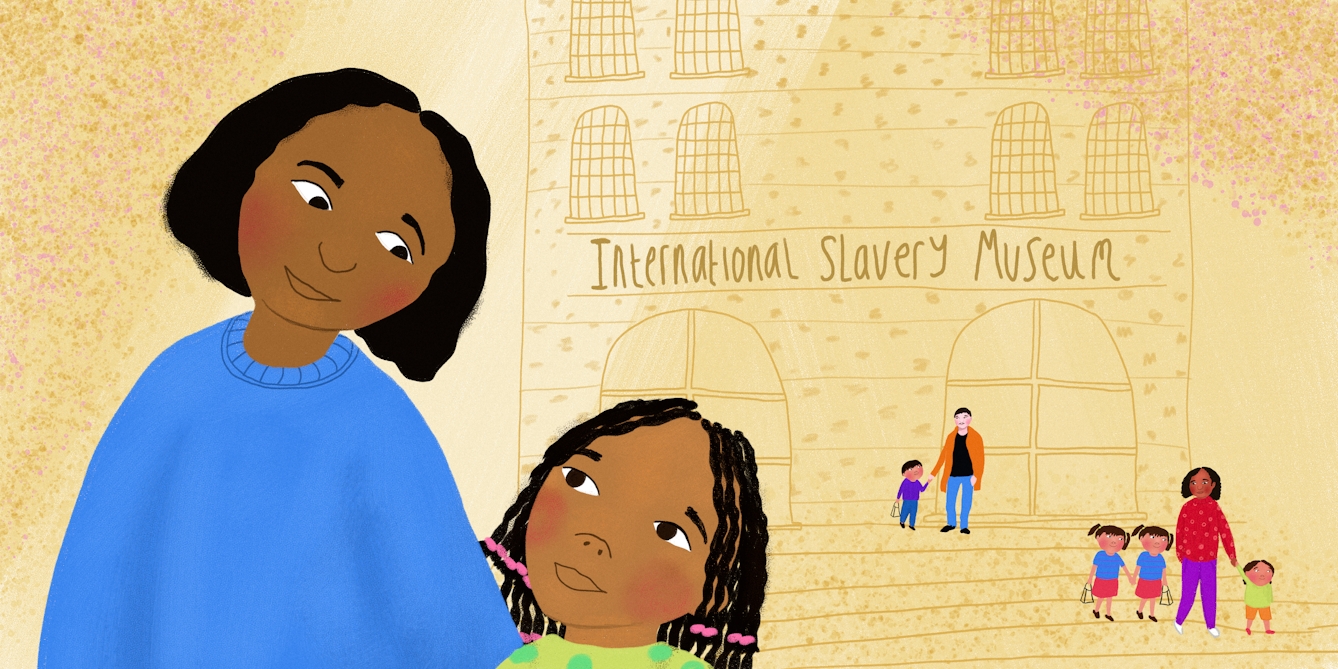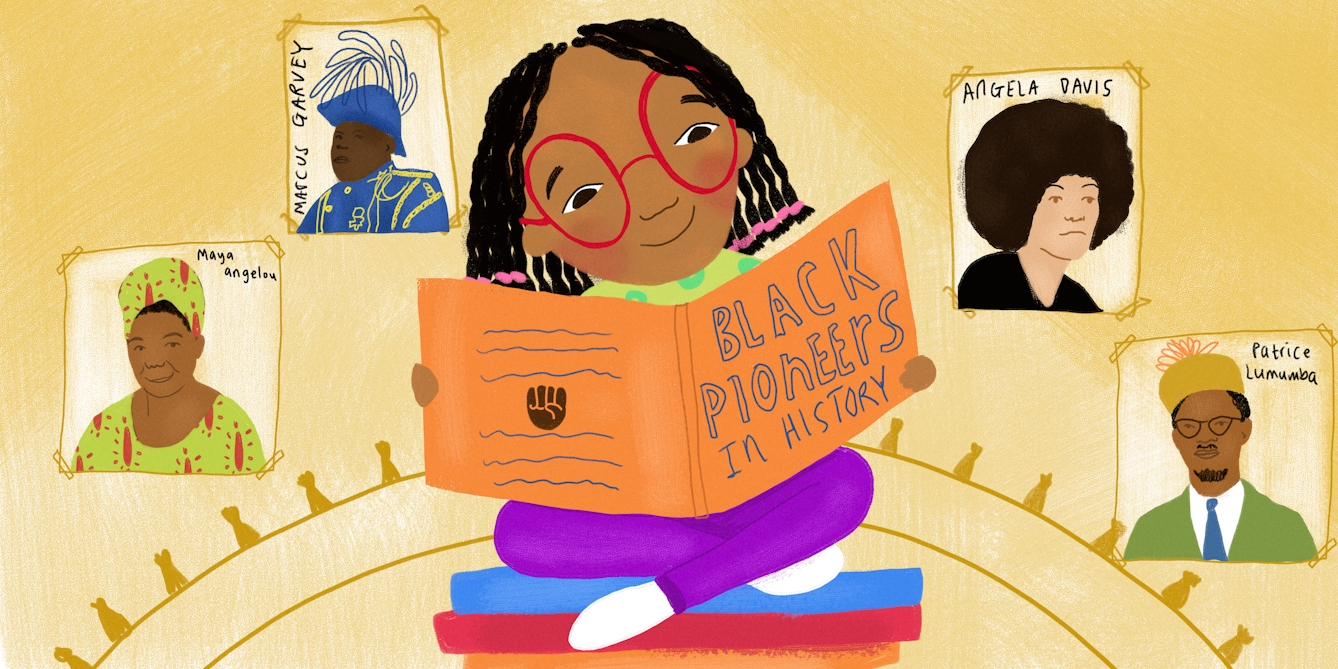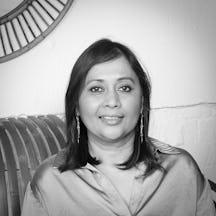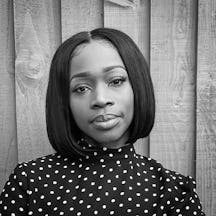When her young daughter declared she’d rather be blonde, a red flag went up for Pragya Agarwal. She could have dismissed it as a phase, but Pragya knew there was a power imbalance at play. When children don’t feel represented, they don’t learn to value themselves. In this essay, the behavioural scientist and author explores how kids can become prejudiced about race, and ways to stop that happening.
My daughter came back from nursery one day and said she wished she had blonde hair because “it was prettier”. It was shocking, but I’m aware of popular beauty narratives and so in some ways I was anticipating it. I’d grown up with the colourism and shame that is imposed upon darker-skinned people, even within Indian communities where “fair skin” is often considered more beautiful.
I tried to reassure my daughter and her twin sibling that dark hair is very pretty, that they are smart and clever and funny, and how important these things are. We also talked about how people are different, but they all look wonderful in their unique way. Despite my assurances, I heard them repeat the wish a few times again. It was a red flag for me.
Most, if not all, of the children my kids see around them are fair-skinned with blonde hair. This is also true of their books, cartoons and toys. In 2018, only four per cent of children’s books published in the UK had a minority ethnic protagonist. Language, symbolism and labels also give out implicit messages that ‘whiteness’ is good and positive, such as Snow White being “white and pure”, while negative things are associated with black, such as “evil”, “dirty”, “wicked witch”, and so on.
For white children, there can be an inherent sense that whiteness is the standard and they are higher up in the social hierarchy.
It might have been easier to dismiss my children’s “blonde is better” feelings as a phase that they should be allowed to explore. But there is a power imbalance at play here. When they don’t feel represented, children don’t learn to value themselves.
In her seminal work ‘The Concept of Representation’, the political theorist Hanna Pitkin showed that descriptive representation has both substantive and symbolic effects, especially with regards to race and gender. Role models matter.

“My daughter came back from nursery one day and said she wished she had blonde hair because ‘it was prettier’. Despite my assurances, I heard them repeat the wish a few times again. It was a red flag for me.”
Noticing difference
Many children are brought up to ignore racial difference. Some parents consider living in a multicultural area as a sign of racial equality, or they assume that if their child hasn’t said anything, they haven’t noticed any difference. Many parents delay talking about race because they assume their children won’t be able to process these conversations.
We might think that children don’t see colour, but research has shown that they start to develop a sense of race from the age of six months or so. At this age children are not assigning any negative connotations with racial identity. They are using skin colour as a sign of difference between people, and they start associating certain skin colours with familiarity.
A young child’s model of the world is egocentric. Over time their “reference group” – the people around them, like family members and carers – becomes part of their sense of self. A child’s reference group helps to define who they are and where they fit in with the world.
Between ages four to seven, children begin to crave a sense of belonging with their friends and peers, as well as their families and carers. Along with noticing similarities and differences, they are also noticing attitudes associated with their skin colour, and they will start feeling excluded or included.
Recently on my podcast, a Black mother told me how her four-year-old daughter was rejected in the playground because of her skin colour. It was a shocking incident that will undoubtedly shape the child’s perception of themselves if it isn’t tackled urgently at home and at school.
“Fitting in” becomes more important to children as they shift to be more ‘sociocentric’: their sense of individual identity evolves into group identity, both cognitively and emotionally, and they become conscious of being part of a group, distinct from other groups.
If a child sees a mismatch among their different reference groups – between their family, teachers, peers and friends – they can start hiding parts of their identities or adopting different personas, which can cause confusion for the child. It’s the reason why it’s important to start working on a child’s self-esteem at preschool age, so they are self-confident but also curious, open-minded and accepting of others.

“I started talking to my eldest child more openly about global inequalities. We visited the International Slavery Museum to understand historic oppressions.”
Looking to the wider world
By the time they’re seven, children are usually beginning to understand that states aren’t fixed, and that identities can be fluid and transform. I remember at this stage it became easier to reason with my eldest child, as they started to understand that different people may have different views on things.
This “concrete operational” stage of development lasts until around 11 or 12 years old, when children start thinking in a more logical and rational way. But they can still find it difficult to understand how people in the same category can also differ from each other and form subcategories. All of us make sense of the world by assigning things into categories, but these are also the labels that children learn from others around them.
For instance, they might still find it confusing how two Brown people can be a Hispanic and an Indian, or how two Black people might have different skin colours. It’s important to discuss that racial identity goes beyond skin colour.
This is also the age when children start forming a deeper sense of injustice in their own lives and so it is a good opportunity to start drawing parallels to the wider world. We might begin to hear “It’s not fair” much more, as children reason whether something is just or not.
I started talking to my eldest child more openly about global inequalities when they were this age. We visited the International Slavery Museum to understand historic oppressions, and we read books on Imperial history together. Knowing more about global history can help children to understand the different forms of oppression that different subgroups face, and how belonging to different groups shapes our privileges.
Children need more opportunities for critical thinking. Asking them questions such as “What do you think about this issue?”, “Why do you think this person behaved in this way?”, “What would you have done in this situation?”, “Why do you think this is not fair?” and “What more can we do to make this better?” will open up a space for non-judgemental and honest conversations and learning.

“The political theorist Hanna Pitkin showed that descriptive representation has both substantive and symbolic effects, especially with regards to race and gender. Role models matter.”
Unlearning bias
Research studies and my own work with schools and parents show that, even as parents become much more aware of the need to have discussions around race and racism with their children, they are doing so primarily in response to race-related incidents. Even as there was a surge in demand for educational resources around Black Lives Matter protests last year, this enthusiasm seems to have somewhat subsided since.
While researching my book ‘Wish We Knew What To Say’ and speaking to parents for my podcast, I found that white parents are fearful of getting it wrong or not having the right vocabulary. We can start by unlearning some of our biases, ones we internalised during our own upbringing.
Booker Prize-shortlisted author Avni Doshi recently wrote an article for Vogue India about her fear of perpetuating her mother’s biases against dark skin in her own mothering. We can project our fears and prejudices onto our children unintentionally. They notice our actions and attitudes as well as our words.
As I raise my multiracial children, I’m conscious of my own responsibility to not only inspire a sense of pride in their Indian and European heritage, a strong, unshaken self-belief, but also an acknowledgement of their own privileges that can empower them to support others.
I am conscious that I have to work consistently to help them understand that differences exist, but that these differences don’t have to be the basis of inequalities in our world.
About the contributors
Pragya Agarwal
Dr Pragya Agarwal is a behavioural scientist, speaker and author of ‘Sway: Unravelling Unconscious Bias’ and ‘Wish We Knew What To Say: Talking with children about race’. Her next book ‘(M)otherhood: On the choices of being a woman’ is published in June 2021. She is the founder of a research think tank ‘The 50 Percent Project’ and has two podcasts, ‘Outside the Boxes’ and ‘Wish We Knew What To Say’.
Joelle Avelino
Joelle is a Congolese and Angolan illustrator and animator. She works across publishing and editorial and her animation project with Malala Fund was featured on Design Weekly’s favourite International Women’s Day projects of 2020. She is an avid believer in the importance of representation in the creative arts and continues to push and create work that shows underrepresented communities in mainstream media.


